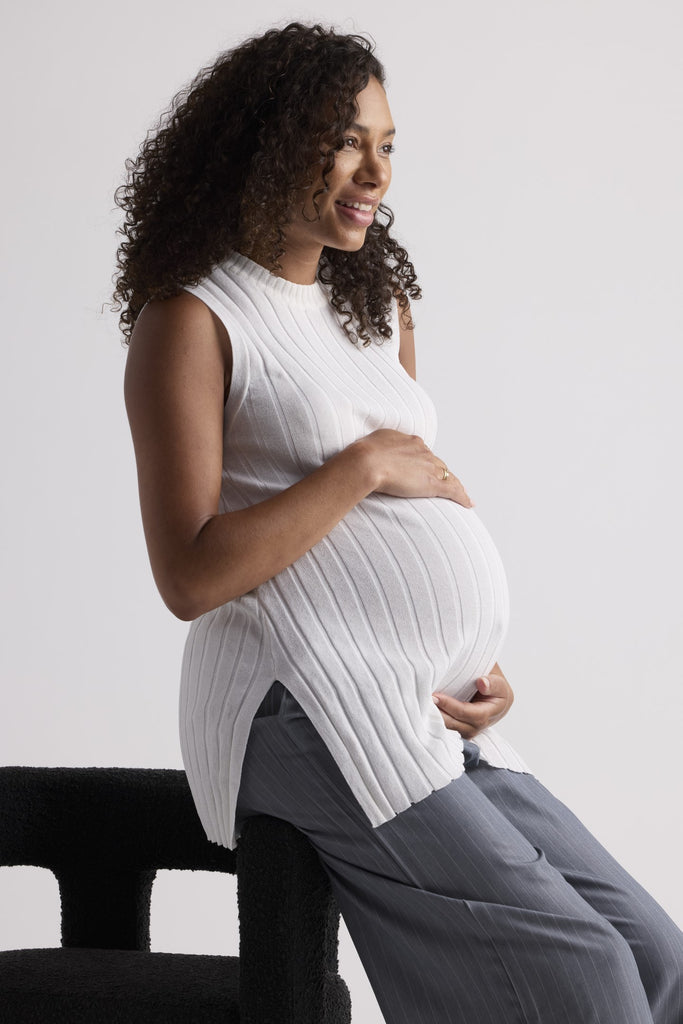
Understanding the Postpartum Recovery Timeline: What to Expect After Childbirth
Becoming a mother marks a transformation for a woman, impacting her both emotionally and physically. The postpartum phase, often known as the "fourth trimester," plays a critical role in the recovery and adjustment for new mothers. Today, we will delve into the postpartum healing journey, outlining the occurrences after childbirth and offering advice for a healthy transition into motherhood.
What Does Postpartum Entail?
The postpartum stage commences after delivery as the mother’s body begins its healing process and adjusts to no longer carrying a baby. This phase typically spans around six to eight weeks, during which various changes occur in the body to revert to its pre-pregnancy state. It's crucial to note that each woman’s body is unique, leading to differences in recovery experiences from one person to another.
The Initial Days Following Childbirth
Your body has undergone transformations throughout this pregnancy voyage, with more changes yet to unfold. In the days post-delivery, you will undergo physical alterations such as:
- Lochia: This is the vaginal discharge that consists of blood, mucus, and uterine tissue. It starts out heavy and red, then gradually becomes lighter, turning pink or brown, and eventually yellow or white.
- Breast Changes: Your breasts will start to produce colostrum, the first form of milk for your baby. They may feel fuller, heavier, and sometimes uncomfortable as milk production ramps up.
- Uterine Cramping: Also known as afterpains, these cramps occur as your uterus contracts back to its pre-pregnancy size.
During this period, it's important to prioritize comfort and continue to wear your maternity clothing to avoid tight-fitting clothing while you're healing. Opt for comfortable options like a maternity maxi dress or a wrap dress that allows for breastfeeding.
Tips for Physical Recovery
Physical recovery post-pregnancy is crucial for several reasons. The body undergoes significant stress and changes during the nine months of pregnancy and the labor and delivery process, which impacts muscles, bones, hormones, and overall health. Below we provide some tips for recovery:
Rest as Much as Possible
As you start your journey into motherhood, it's crucial to make rest your priority. Your body has gone through a transformation during childbirth and now requires time to recover. Embrace the timeless advice of "Rest when the baby rests" to get the needed sleep. Don't hesitate to ask for help from loved ones to manage household chores or take care of the baby, allowing you some time to rejuvenate. Keep in mind a rested mother is more capable of looking after her little one.
Stay Hydrated and Eat Healthy Foods
Staying hydrated and eating well are key factors in your journey to getting better. It's important to drink lots of fluids, especially if you're nursing, as it helps with milk production and keeps your energy up. Make sure to eat a diet packed with vitamins, minerals, and protein to help your body heal. Opt for meals that include a mix of fruits, veggies, whole grains, and lean proteins. A rich diet not only aids in physical recovery but also gives you the stamina required for the challenges of being a new mom.
Take Care of Yourself
After giving birth, it's important to take care of yourself in the weeks that follow. You may experience lochia after delivery, so make sure you have an adequate supply of sanitary pads. To help with any discomfort or swelling, consider using ice packs or sitz baths as recommended by healthcare professionals. Opting for loose-fitting clothing, like a maternity dress, can help you feel more comfortable as your body heals. If you've been given pain relief medication, follow the instructions to manage any postpartum discomfort. Pay attention to your body’s signals and allow yourself the time needed to recover at your own pace.
The Initial Six Weeks
The first six weeks following delivery are a period of adjustment. Your hormones are fluctuating, which may lead to emotions. While you may continue to experience Lochia during this time, it should gradually stop within the first six weeks. Your milk production will begin after giving birth, potentially causing sensitivity. Moreover, the drop in hormones like estrogen and progesterone could result in mood swings or postpartum blues.
Emotional Shifts
In addition to physical changes, there will be emotional shifts due to hormonal changes in your body. It is common to feel emotional or tearful during the days post-delivery; however, these feelings typically subside quickly. If feelings of sadness, anxiety, or depression persist beyond this period, seeking guidance from a healthcare professional is crucial.
Two to Six Months Postpartum
Between two to six months after giving birth, your body continues to recover. Many new mothers begin to feel more like themselves. However, full recovery can take months, and it’s common to still notice some changes.
To ease back into your routine, it's advisable to reintroduce physical activities that can help strengthen your body and uplift your spirits. Remember to pay attention to how your body feels and avoid rushing into activities before you feel physically and emotionally prepared.
When Should You Seek Help
While most of the postpartum phase involves natural healing processes, there are signs that new mothers should be mindful of during this period. If you experience any of the following issues, it's important to seek advice from your doctor:
Excessive Bleeding
Bleeding after childbirth is normal. However, if you find yourself soaking through more than one pad per hour or passing clots, contact your healthcare provider without delay.
Painful Urination or Incontinence
Facing difficulties while using the restroom may indicate a need to reach out to your healthcare provider. This could be a sign of a urinary tract infection or pelvic floor concerns.
Staying Healthy During the Postpartum Period
The journey through the postpartum phase varies for each mother and their baby, with changes both physically and emotionally. It's important to remember that recovery takes time, and it's best to listen to your body and not rush the process. It's completely normal to continue wearing maternity clothes during this period, so there's no need to pressure yourself to fit into your pre-pregnancy wardrobe.
Knowing what to anticipate during the postpartum period can help ease any anxieties. Remember, reaching out for support when needed is crucial. Taking care of yourself is vital, for both your well-being and that of your baby.





